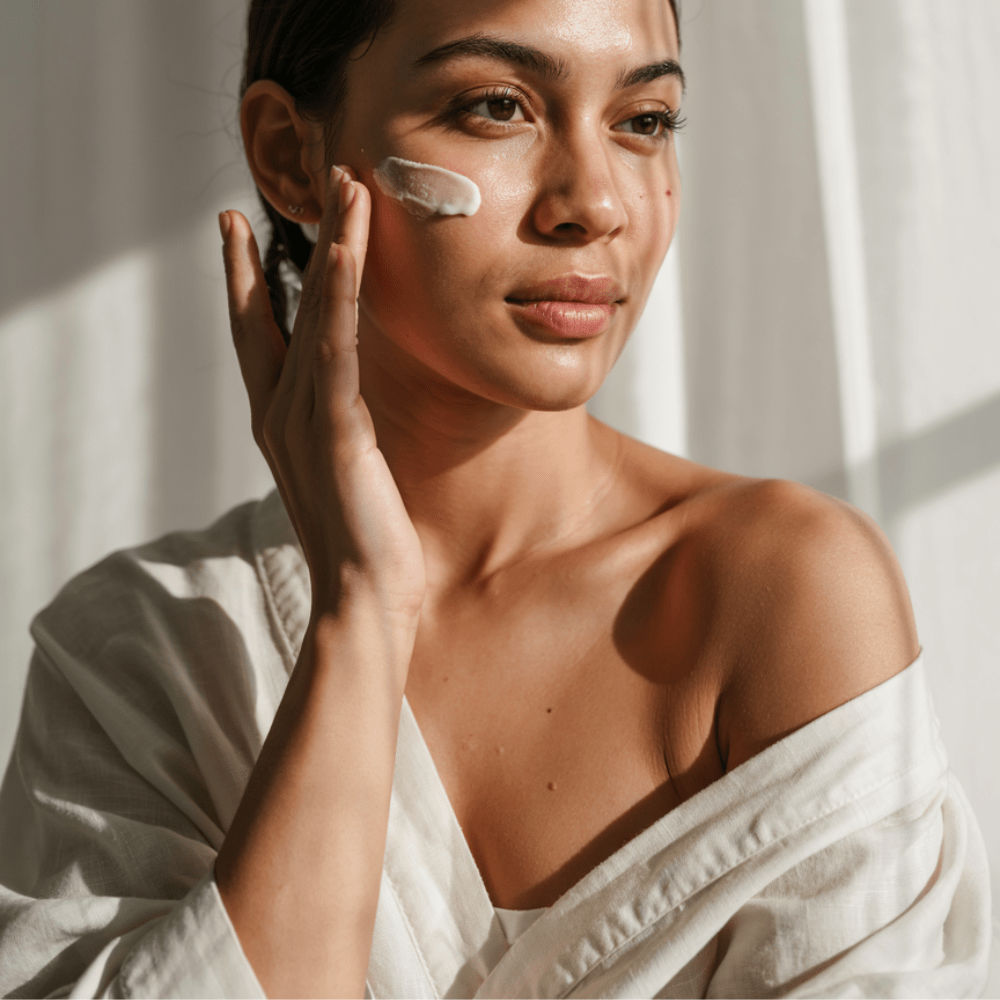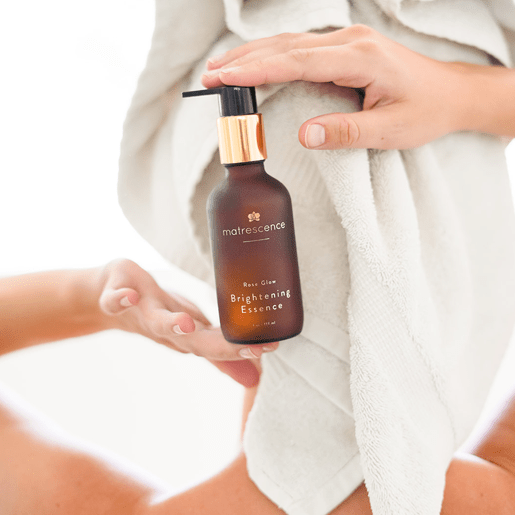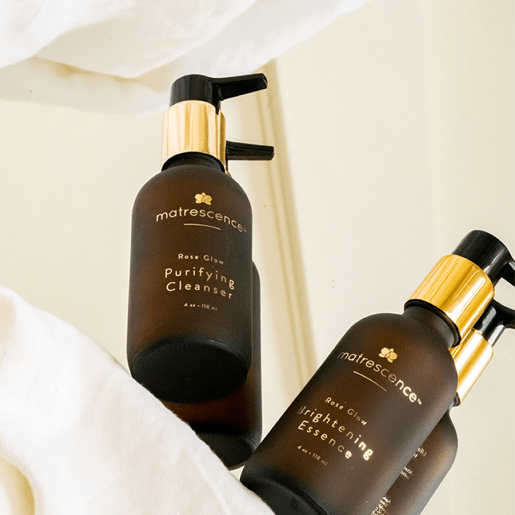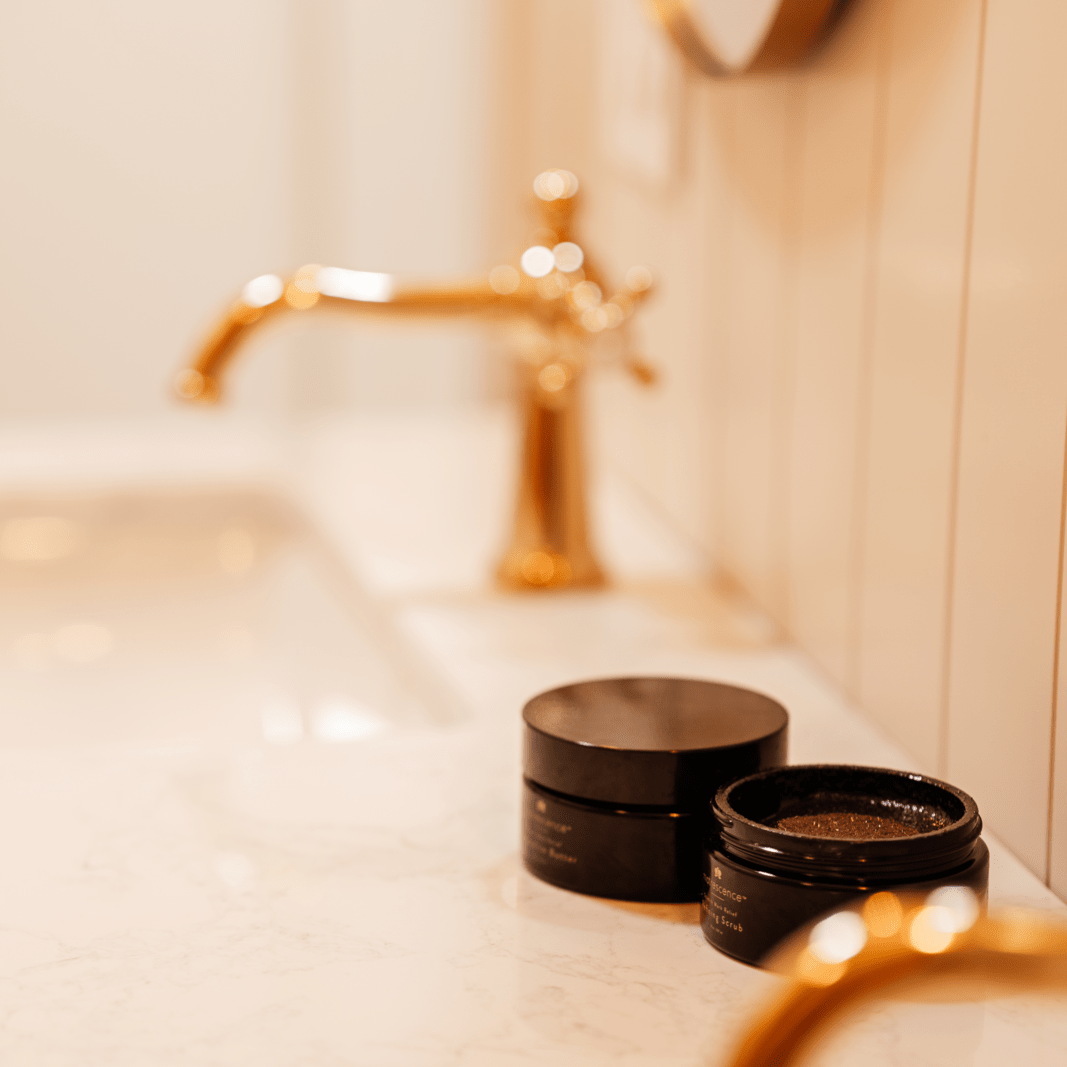Pregnancy is filled with excitement, nervousness, and joy. But one of the things I didn’t expect as a first time mom was just how much my skin would change right from the beginning! For many of us, instead of that "pregnancy glow” we end up dealing with pregnancy acne, or pregnancy dull skin, or pregnancy melasma/chloasma.
But don't worry, mama - you have options! Familiarize yourself with the different skin issues you can expect during pregnancy, and how to safely and effectively get you that pregnancy glow you deserve. Let’s take a closer look at exactly how matrescence - the process of becoming a mother - can impact your mama skin.
Pregnancy Skin Concern: Acne
For many of us, acne can be one of the first pregnancy symptoms we have! We asked, and 60% of you said acne was your biggest skin concern while pregnant. Hormonal fluctuations especially in early pregnancy can cause your sebaceous glands to go into overdrive and produce more oil, leading to clogged pores and pesky breakouts. Many acne fighting ingredients can be harmful during pregnancy, including retinoids, retinols, and certain antibiotics. It’s important to seek out ingredients that are effective and also pregnancy safe. A gentle cleanser specifically formulated for acne-prone or sensitive skin that won't strip your skin of natural oils is a great choice.
Pregnancy Skin Concern: Chloasma
If you notice brown, patchy spots on your skin during pregnancy, you might be experiencing a condition called chloasma, a form of melasma, which is a type of hyperpigmentation characterized by brown or gray-brown patches on the skin. It's more commonly known as the "mask of pregnancy." While melasma is the general term for this skin condition, chloasma specifically refers to melasma that we experience during pregnancy.
The spots are usually found on the face, but can also appear on other parts of the body such as the arms, neck and legs. They are usually larger than freckles and can appear in a symmetric pattern on both sides of the face.
While chloasma poses no discomfort or harm to your health, it can cause mamas to feel self conscious about their appearance during this emotional time. It is important to understand that chloasma is common during pregnancy and will usually (but not always) disappear after giving birth. You can manage it by wearing sunscreen and limiting sun exposure, avoiding harmful skincare ingredients, and using skincare products with pregnancy safe ingredients aimed at reducing its appearance.
Skincare products with mushroom extract, particularly shiitake and linghzi, are are a great natural way to improve cholasma. Because of their rich concentrations of kojic acid, a natural hydroquinone substitute, they can help to brighten the skin, fade dark spots and lighten the areas of hyperpigmentation without the irritating side-effects.
Vitamin C (Ascorbic Acid) is a potent antioxidant that can help protect your skin from the sun, brighten skin, promote an even skin tone, and aid in fading dark spots. Make sure to look for a Vitamin C product specifically formulated for pregnancy and nursing, such as all three of the products in the Rose Glow Trio as well as the Stretch Mark Relief Refining Scrub.
You can find a full list of safe ingredients to combat chloasma here.
Pregnancy Skin Concern: Linea Nigra
Linea nigra is a dark line that runs vertically down the center of the belly and is caused by increased melanin production during pregnancy. It can’t be treated or prevented, but a nourishing skincare routine during pregnancy can help to keep your skin itch-free and strong.
Pregnancy Skin Concern: Stretch Marks
Beauty marks. Tiger stripes. Love lines. There are so many ways to lovingly refer to our stretch marks. Rather than something to be ashamed of, at Matrescence we choose to view them as a beautiful reminder of the amazing journey our body undertakes to grow an incredible human. However, we recognize that many moms may want to take steps to reduce the appearance of these marks.
While there's no magic cream to prevent stretch marks entirely, keeping your skin hydrated and maintaining a healthy weight gain can make a difference. Moisturizing regularly with emollient, fragrance-free products can also greatly help. The Stretch Mark Relief Trio is made with mama in mind - it works to support skin as it stretches, to keep it hydrated and strong, and reduce tearing that shows up as stretch marks on the skin. Each product works to hydrate, support elasticity and stimulate skin regeneration and renewal.
Pregnancy Skin Concern: Dry & Itchy Skin
Hormonal changes during pregnancy can cause dry skin in moms. Dry, itchy skin is also common postpartum, especially when breastfeeding, due to hormonal fluctuations and compounded by a lack of sleep.
The solution? Increase your hydration internally by drinking lots of water, and externally by investing in a soothing, hydrating new mom skincare routine specifically designed for your needs at this time. In addition to the gentle cleanser we discussed above, the Rose Glow Brightening Essence helps to restore the skin's natural pH, creating the optimal environment for your skin to thrive. It uses natural witch hazel to regulate oil production and minimize the appearance of pores. As a bonus, it also removes any remaining traces of dirt, oil, or makeup that your cleanser might have missed to further reduce the likelihood of breakouts.
Avoiding harsh ingredients and switching to moisturizers with natural lipids like sunflower seed oil or sea buckthorn will help to refine all your dry patches. The Rose Glow Brilliance Protection Soufflé quickly restores the skin on your face while preventing further loss by creating a barrier that locks in the moisture. We love the Stretch Mark Relief Restorative Butter for the rest of you!
Disclaimer: Always consult with your healthcare provider for personalized advice and guidance during pregnancy. Enjoy the journey!
the guide

From PCOS to perimenopause, hormonal shifts happen at every life stage. Learn why hormone-safe skincare is a must—even if you’re not expecting.

Whether you’re pregnant, postpartum, or perimenopausal, choosing the right ingredients makes all the difference. In this guide, we explain why endocrine disruptors matter, spotlight clean actives a...

A deep-dive of our Brightening Essence. A dual-action toner and serum that gently exfoliates and hydrates to reveal a vibrant, more even complexion. Formulated for hormonally shifting skin, it help...








Leave a comment
All comments are moderated before being published.
This site is protected by hCaptcha and the hCaptcha Privacy Policy and Terms of Service apply.